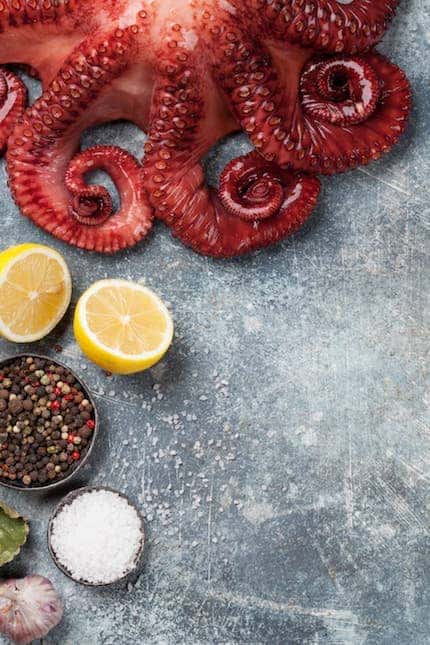If You Can Boil Water…
The simple and effective way to cook green vegetables for practically any use.
All green, non-leafy vegetables work the same. These include green beans and peas, fava beans, asparagus, cabbage vegetables like Brussels sprouts and broccoli, and allium vegetables like scallions and garlic ramps.
They make ideal additions to soups, stews, casseroles, quiche and practically anything else—a function that’s called garnishing, because that’s exactly what you do when you populate a dish with colorful vegetables. You prepare them beforehand separately, which preserves their flavor and texture.
For that purpose, boiling these vegetables is the way to go. It enables you to season the water with plenty of salt and to cook two or three pounds all at once.
As I explain here, you don’t have to worry about the quality of you tap water or bother with an ice bath, contrary to what Monsieur le Chef insists. Your vegetables will retain a perfectly appetizing shade of green if you simply remove them from the water when they’re done. They’ll taste better, too.
I don’t recommend steaming them. You’ll have to cook your vegetables in several small batches, first of all. Steaming works best when you scatter your ingredients in a single layer so that the steam can access each one evenly.
You’ll also have to deal with steaming inserts. These tend to be too shallow, practically ensuring that the water will boil off and damage your pan.
You can always resort to an electric steamer, of course, but then, that’s one more appliance you have to deal with, an object with its own special controls and its own workflow that stand apart from your ordinary tools and utensils.
Efficiency isn’t really a matter of saving effort. It’s the product of repetition and familiarity. If a gadget introduces distractions or involves isolated decision-making, then it will just slow you down, whatever its work-saving qualities. And that will make you reluctant to cook.
The microwave, for example: It’s a convenient way to steam foods, since its mild radiation instantly agitates water molecules, creating frictional heat that very quickly produces to steam.
In practice, the appliance cooks everything from inside-out, turning your vegetables from tender to leather in a matter of seconds, even if you seal them tightly with cling wrap, as nutritionists advise.
Nutritionists insist also that steaming is the healthiest way to cook, since vegetable nutrients won’t wash away, as they do somewhat in boiling water.
I look at it this way: The easier that it is to cook my vegetables in a way that actually makes them appealing, the more that I’ll eat.
Results must justify efforts. That’s the first principle of cooking. If you aren’t entirely satisfied with what you cook, then eventually you won’t even bother.
- How to Boil Green Vegetables
- Prepare the vegetables by peeling or slicing them.
These are extremely simple tasks, although each vegetable has its own peculiarities. I go into detail about it all in my article on prepping green vegetables.
I’ll summarize:
Green beans: Trim them and slice them into thirds.
Sugar-snap (or “snow”) peas: Cook them as-is.
Broccoli: Slice them into bite-sized pieces.
- Prepare the water.
It’s true that the temperature of boiling water helps these vegetables to cook quickly and evenly. As I explain in my introduction to green vegetables, maintaining a perfect boil is a waste of effort, because it produces only negligible improvements.
Just get the water back up to temperature as quickly as you can. Use the smallest pan feasible; its relatively compact surface area will permit the water to regain a boil as quickly as possible.
So:
I’ll explain why in a moment.
This ensures that the water won’t boil over and make a mess.
× 0.03
weight of salt
Put your phone down. You don’t need a calculator. Just remember that a hundred ounces of water takes three ounces of salt (or that a liter takes thirty grams). Round to the nearest whole number and estimate.
Salt transforms your cooking water into a solution that is nearly as concentrated as the flavorsome cellular liquids of each vegetable. As a result, the cellular contents don’t leech out into the cooking water. The vegetables remain tasty, and not really salty at all.
A three-percent salt solution is a good rule of thumb. It’s the salinity of seawater, more or less.
The weight and volume of water are interchangeable, by the way. That’s how our measuring systems work:
And:
Without a kitchen scale, you’d have to quantify the salt each time using cups and spoons. A scale saves you like this in so many situations that I consider it to be one of only three truly essential kitchen tools.
Finally:
Don’t go anywhere. If you need to leave the kitchen, then turn off the burner.
- Boil your vegetables.
Your vegetables are done when they’re done. The time that this takes depends on your whim and their freshness.
Check large asparagus spears and Brussels sprouts using the tip of a knife. It’s a test that works the same with potatoes, beets, artichoke hearts and any other dense vegetable:
- Dry the vegetables, if you wish.
This way, your vegetables won’t inadvertently water down whatever they happen to garnish.
And that’s it.
 |
SHARE THIS ARTICLE

No Comments